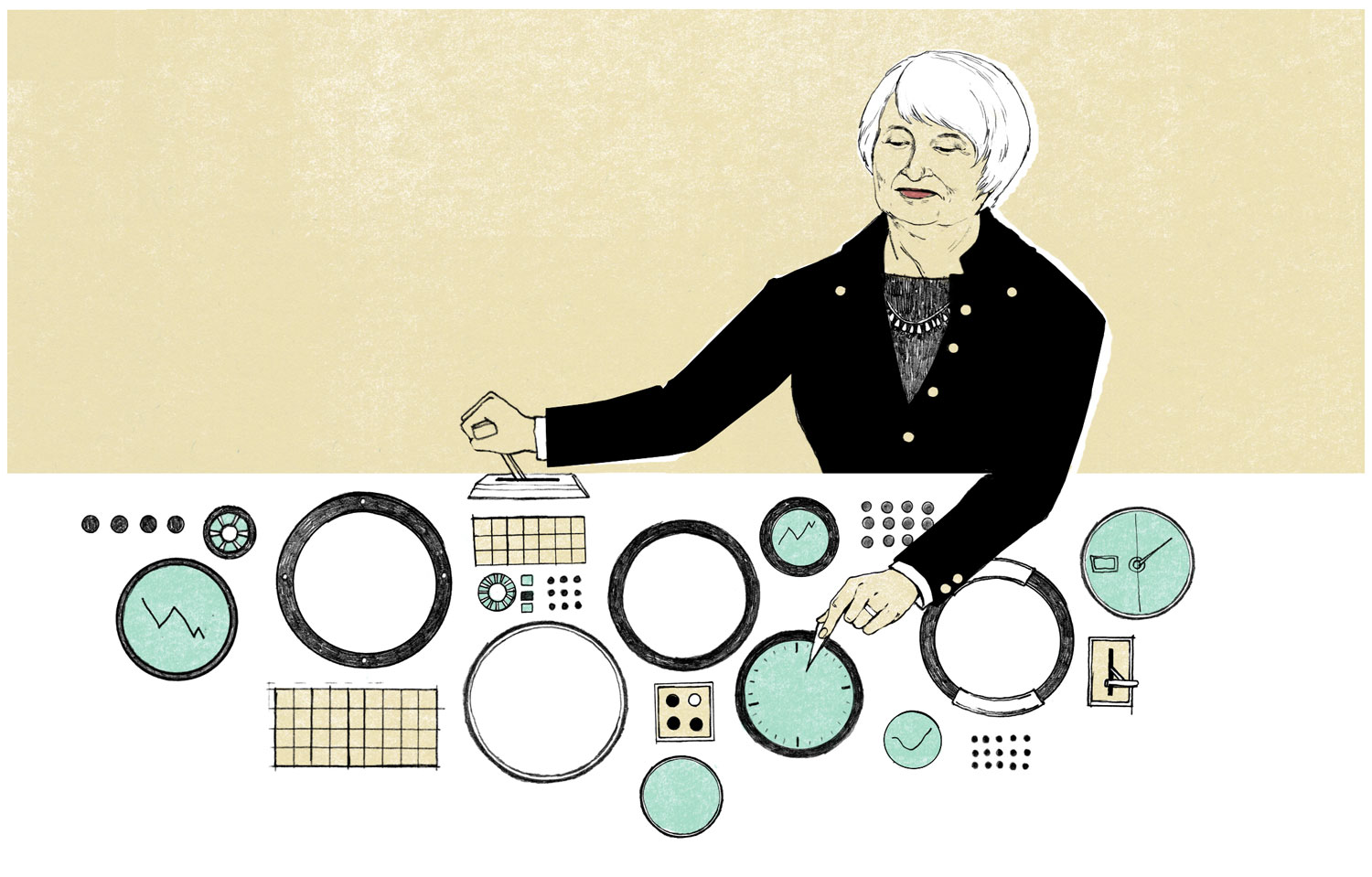
As chief pilot of the Federal Reserve, Chair Janet Yellen watches an array of gauges to steer the economy toward price stability and maximum sustainable employment. We've collected the most important to create Janet Yellen's Dashboard.
Comparing the yield on conventional U.S. Treasury bonds with the yield on bonds that automatically adjust for inflation gives an indication, albeit an imperfect one, of the bond market's prediction for inflation 10 years in the future. Markets currently see the Fed achieving an inflation rate close to its 2% target.
The year-over-year changes in average hourly earnings and the employment cost index (ECI), which includes both wages and benefits, track the price of labor. Growth in labor costs faster than the growth in productivity suggests mounting inflationary pressures.
The overall unemployment rate shows the percentage of people who don't have jobs, but are actively looking for work. Fed officials see the long-run sustainable unemployment rate between 5.2% and 5.6%. The long-term unemployed are those who've been out of work for six months or more. Underemployed includes the unemployed plus those working part-time who'd prefer full time work and those who've given up looking for work.
The monthly change in the payrolls of all public and private employers (except farmers) is a widely watched measure of hiring even though the monthly changes represent a very small fraction of the 138 million total.
The labor force participation rate is the proportion of the population between the ages of 25 and 64 who are employed or actively looking for work. During and following a recession, workers may get discouraged and stop looking for work, as appears to have been the case recently.
The gross domestic product is the market value of all goods and services produced in the U.S. in a given quarter or year. The quarter to quarter change in the GDP, calculated at an annual rate, is the primary measure of the pace of economic growth.
Industrial production is a measure of output of factories, mines, and electric and gas utilities, an important measure of the economy's vigor even though an increasing share of output comes from the service sector.
The number of new single-family homes on which builders have begun work is a key measure of the strength of the important housing sector. This closely tracks the number of newly built homes sold.
The Federal funds rate, at which banks lend to each other overnight, has been one of the Fed's primary instruments for steering the economy. It's been near zero since late 2008. Trading in futures markets indicates investors' expectations for the future course of rates, and Fed officials give their own predictions quarterly.
Yields on 2-year and 10-year Treasuries are benchmarks for the rates that consumers and businesses pay on loans. They reflect longer-term expectations for inflation and Fed policy, and recently have been pushed down by the Fed's purchases of bonds.
The stock market reflects investors' outlook for profits and the economy and it influences consumer spending. The Standard & Poor's 500 is a widely watched index of the shares of 500 leading companies. The Case-Shiller Home Price is an index of home prices in 20 major metropolitan areas
Less well known than the Consumer Price Index, the Personal Consumption Expenditures (PCE) price index is viewed by the Fed as a more accurate measure of the change in the prices consumers pay for goods and services. The core PCE price index, which excludes the volatile food and energy prices, is the Fed's preferred indicator of underlying inflation. The Fed has a 2% target for PCE inflation.